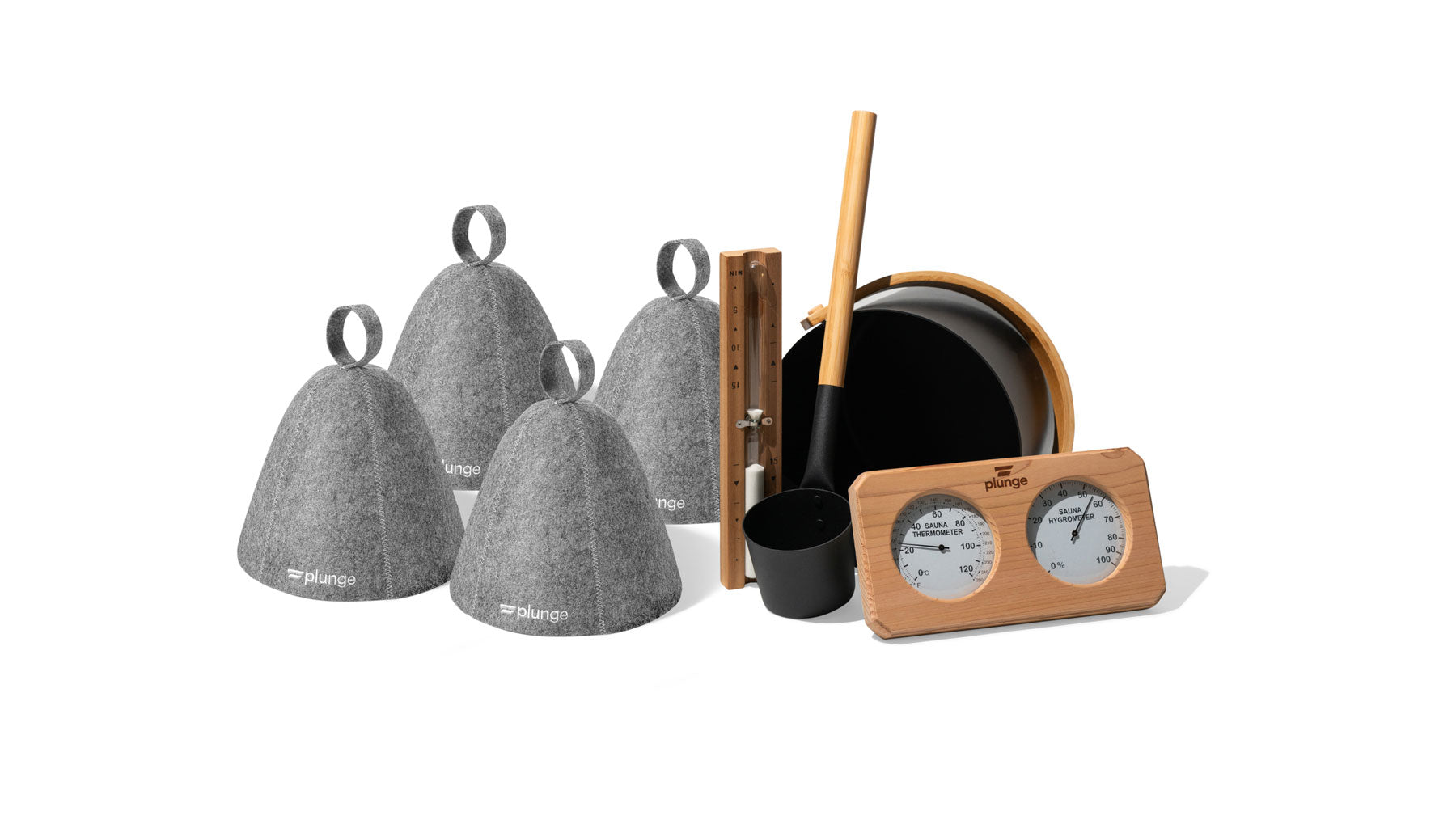
Infrared vs. Traditional Saunas: What You Need to Know
Saunas have been hailed for their many health benefits over the centuries (and millennia). From the traditional Finnish saunas to new infrared versions, the basic goal is the same — heat the body to induce sweating and promote relaxation. However, these two types of sauna offer unique experiences, mostly stemming from how they deliver heat. Today, we’ll cover the basics of each, differences in health benefits, and other key distinctions between these two popular product categories.
Understanding Each
Before we plunge into the specific benefits of each, it's important to understand how each of these sauna variants works. Their heating methods and historical backgrounds both shape your experience and the potential health impacts:
How Traditional (Dry) Saunas Work
Originating from Finland over 2,000 years ago (although early “saunas” in the region can be dated to 7,000 BC), the traditional sauna — often referred to as a “dry sauna” or “Finnish sauna” — represents the oldest and most widely recognized type. These saunas are built from high-quality wood like cedar, chosen for its resilience against high heat and moisture. The dry sauna relies on either an electric heater or, in more traditional setups, a wood-burning stove to heat rocks. When water is poured over the rocks, it creates bursts of steam, intensifying the sauna’s heat.
Temperatures inside traditional saunas typically reach 150-195°F, and the relatively dry air (compared to a steam room) allows for a high, steady heat that can quickly elevate body temperature. As your body absorbs this intense heat, its core temperature rises, blood vessels dilate, and sweat glands kick into overdrive. It's a full-body experience that engages all your senses, from the feel of the hot air on your skin to the gentle hiss of steam rising from the rocks.
How Infrared Saunas Work
Infrared saunas, while newer to the wellness market, have grown in popularity with their ability to heat the body directly rather than through the surrounding air. Pioneered by a Japanese doctor in the 1960s and further developed by NASA to keep astronauts warm in space, these saunas have since found their way into the wellness mainstream.
Unlike their traditional counterparts, infrared saunas don't heat the air around you. Instead, they use infrared lamps to emit electromagnetic radiation, which your body absorbs directly. This radiation, typically in the far-infrared range, penetrates up to an inch and a half into your body, heating from the inside out. They typically operate at lower temperatures (120-140°F) but a similar level of sweating and perceived heat. Unlike traditional saunas, infrared models can be housed in smaller, more space-efficient units (even face masks), appealing to those with limited space.
Health Benefits
Both traditional and infrared saunas offer potential health perks. While there is certainly still overlap, each type comes with unique advantages as well:
Benefits of Traditional Saunas
The higher-intensity sweat session of traditional saunas helps open pores, flush toxins, and rejuvenate the skin. This environment can also simulate a short workout for the heart and circulatory system, boosting cardiovascular health. Dry saunas support deeper muscle relaxation, and the addition of steam improves lung function and provides respiratory relief. Studies have shown that regular sauna users also have a lower incidence of common colds and other respiratory infections. The social aspect of these saunas is another benefit that is often overlooked — traditional saunas, especially in Finnish culture, are usually communal experiences. This social interaction, combined with the physical benefits, can lead to improved mental health and a sense of well-being.
Benefits of Infrared Saunas
Infrared saunas provide a milder experience, allowing for longer sessions at lower temperatures. Because of the direct infrared waves, the sweating mechanism operates differently than in traditional saunas, and users may find it gentler and less intense. While they stimulate sweating and blood flow, they’re also great for deep tissue heating (due to the heat penetration), which can support muscle recovery — particularly for chronic conditions like fibromyalgia and arthritis. Some studies suggest that the direct heating of the body can increase calorie burn and improve insulin sensitivity, although more research is needed to verify these effects.
Key Differences
As we’ve discussed, several key areas set these saunas apart. Understanding these differences is crucial for making an informed decision about which type is best for you.
Heating Method
Traditional saunas heat the air around you, creating a convection effect that warms your body from the outside in. The heat penetrates your skin and gradually raises your core body temperature.
Infrared saunas use electromagnetic radiation to heat your body directly, bypassing the air. This radiant heat penetrates deeper into the body (up to an inch and a half beneath the skin). As a result, you'll sweat at a lower ambient temperature, which some find more comfortable.
The traditional sauna's heating method creates a more immersive, full-body experience. Infrared saunas, while effective, may feel less intense and more targeted in their heating approach.
Session Duration
Traditional sauna sessions typically last between 10 to 20 minutes, with users often taking breaks to cool down before returning for another round. Due to the milder temperatures, infrared sauna sessions can last anywhere from 20 to 45 minutes without breaks.
It's worth noting that the shorter, more intense bursts of heat in traditional saunas might provide a different kind of stress on the body compared to the longer, gentler heat exposure in infrared saunas. This could potentially lead to varied physiological responses and adaptations over time.
EMF Exposure
Electromagnetic field (EMF) exposure is a topic of increasing concern in our technology-driven world, and it's relevant to the sauna discussion as well. Infrared saunas, by their very nature, emit electromagnetic radiation — that's how they work. Some users may be sensitive to EMF, and while most infrared saunas are designed to keep EMF levels low, this may be a consideration for wellness-focused buyers (especially when it comes to prolonged exposure). Traditional saunas, especially those using wood stoves, offer a naturally minimal EMF experience, which can appeal to those sensitive to electronic emissions.
Experience the True Power of Heat from Home
While infrared saunas certainly have their merits, particularly for those sensitive to high heat or looking for targeted therapy, the holistic experience of a traditional sauna is hard to beat. The versatility of being able to control humidity levels, the encompassing heat that seems to melt away stress and tension, and the potential for social bonding all contribute to making traditional saunas a strong choice.
Imagine stepping into your personal oasis of heat and relaxation, right in the comfort of your own home. With a Plunge sauna, you're not just investing in a piece of equipment — you're embracing a lifestyle, a ritual that has stood the test of time.























